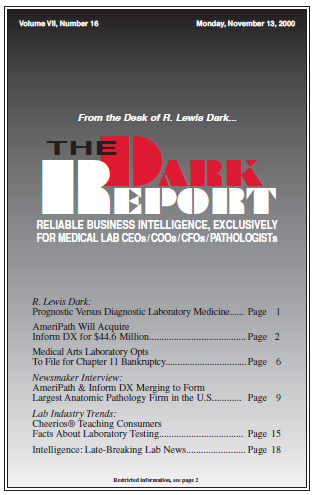CEO SUMMARY: Dissident shareholders and a crushing debt burden are the reason Medical Arts Laboratory decided to file for reorganization under Chapter 11 bankruptcy laws. Both factors are the legacy of an ill-fated attempt to create a national laboratory organization between 1994 and 1997. It’s the story of a business strategy that brought Medical Arts […]
To access this post, you must purchase The Dark Report.


